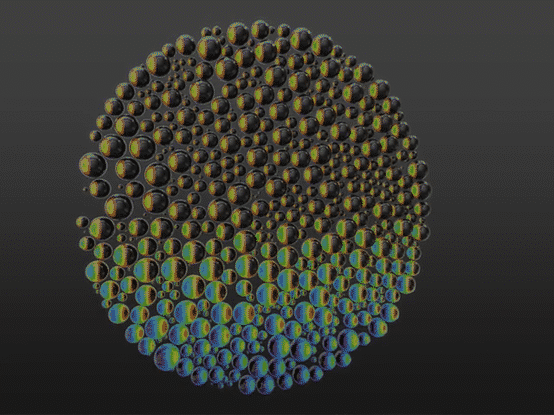
Introduction to Refraction Mapping through Glass Spheres
The intricate world of refraction mapping through glass spheres beautifully merges art with science.
Through these spheres, we witness breath-taking colour transitions solely based on the shifting of an observer’s perspective.

Historical Significance and Applications
Throughout history, various artists and scientists have embraced the use of glass spheres. Not only have they frequently highlighted their role in artistic expressions and innovative designs like dew collectors, but they’ve also underscored their unique qualities. So, what exactly makes them stand out?
The Phenomenon: Color Transitions and Its Causes
The magic lies in the sphere’s ability to refract light and the paint applied to their rear. Consequently, they display astonishing color changes as the observer alters their viewpoint. Moreover, several crucial factors influence this transformation:
- The observer’s unique position
- The particular sphere’s radius
- The sphere material’s refraction index
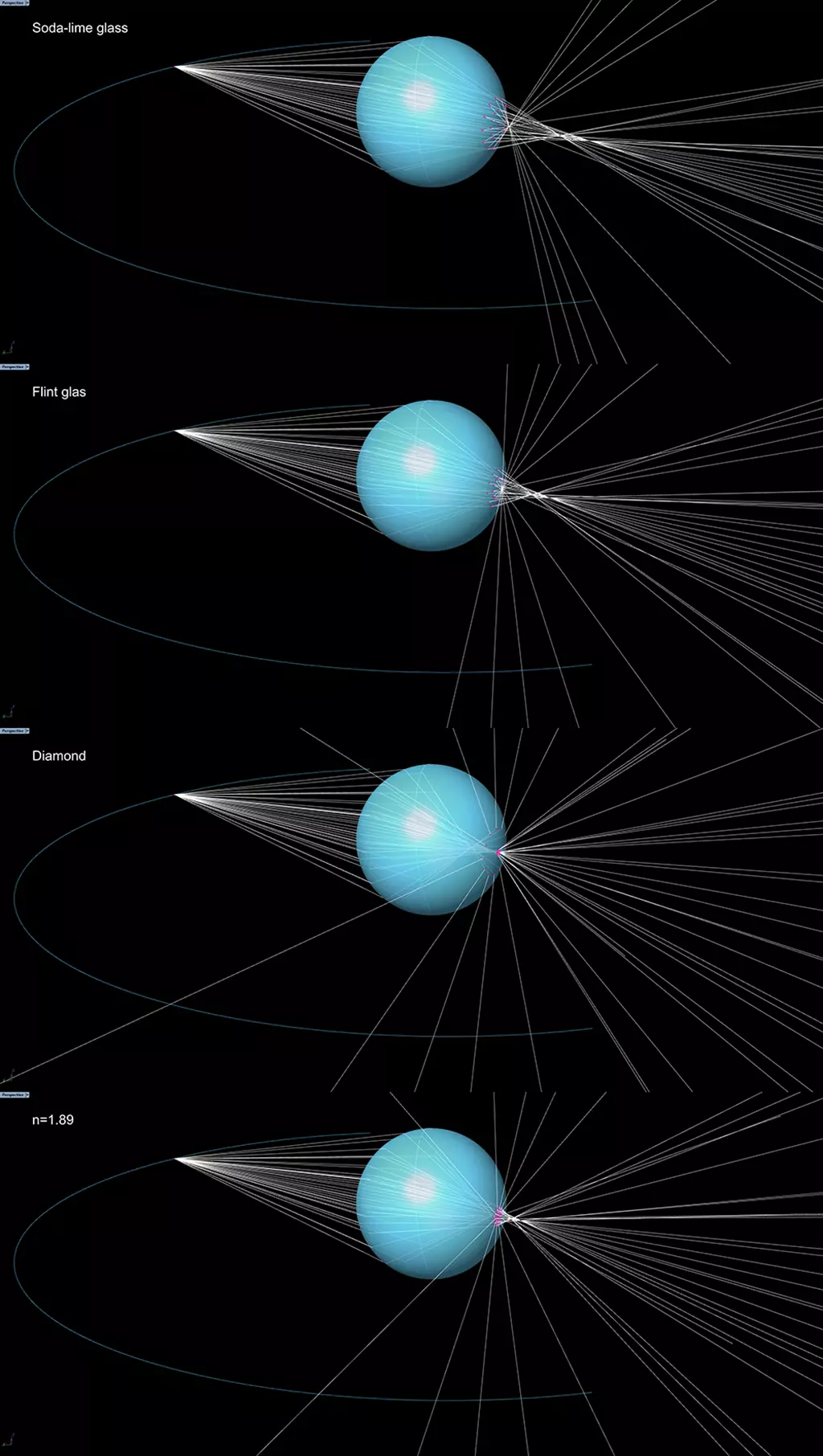
Diving Deeper: Dynamics and Processes
By understanding refraction mapping, we see a deeper narrative. It’s a story of how images become prominent or fade away, depending on where the observer stands. Typically, each sphere goes through a consistent transformation, but our aim here is to identify specific colour territories for every sphere.
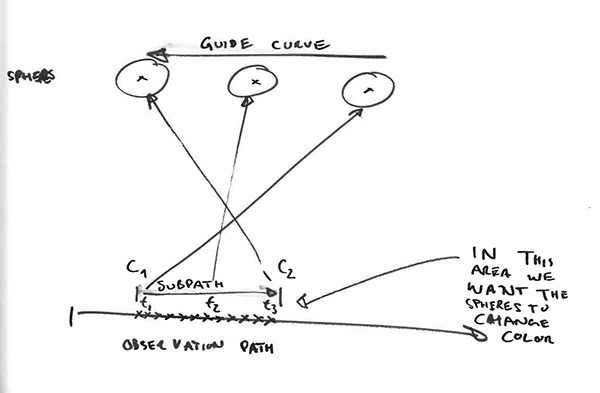
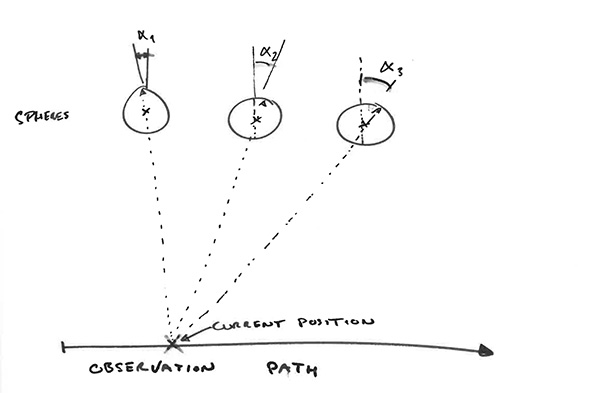
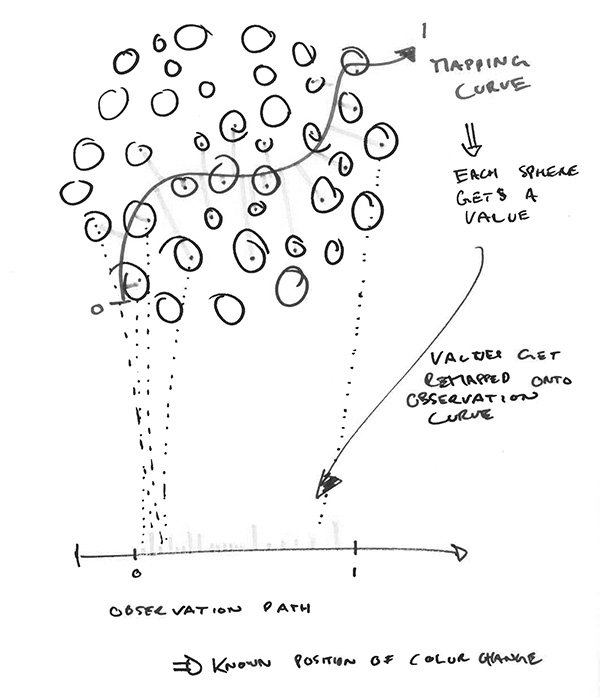
The Role of Guide Curves in Mapping
The introduction of a guide curve in the setup is transformative. This curve allows us to predict a spectrum of colour alterations. The position of a sphere concerning this curve defines its hue. Interestingly, spheres distant from the curve might retain their original colour, due to their lack of interaction with the curve.
Some applied examples of the described technique
You can explore a plethora of scenarios, ranging from a spiralling guide curve with reversed black colouring to aligning multiple colours with a linear guide curve where overlapping colours truncate the overall range.
Spiraling guide curve – black coloring is reversed.
Individual colors follow linear guide curve. Colors are distinct.
Multiple colors follow a linear guide curve. Colors strongly overlapping. Overall coloring range is truncated.
Multiple colors follow multiple polar arrayed guide curves. Colors are overlapping. Overall coloring range is truncated.
Multiple colors follow a linear guide curve. Spheres out of the range are grouped. Colors strongly overlapping. Overall coloring range is truncated. Guide curve is reversed at the middle of the observation path.
Multiple colors follow linear guide curve. Colors slightly overlap.
Two groups of guide curves are stacked to be played in order.
Two groups of guide curves are stacked multiple times to be played in order.
Future Endeavours: The Expansive Potential of Refraction Mapping
The scope of refraction mapping through glass spheres is vast. As our exploration deepens, we find various avenues to consider:
- Potential increase in sphere count for detailed visuals.
- Exploring diverse methods of colouring.
- The promise held by different refractive materials.
- Geometric tweaks for spheres further away.
- Grouping spheres based on their paint design.
Refraction mapping through glass spheres, therefore, offers endless possibilities, bridging art and science in a mesmerizing play of light and hue.